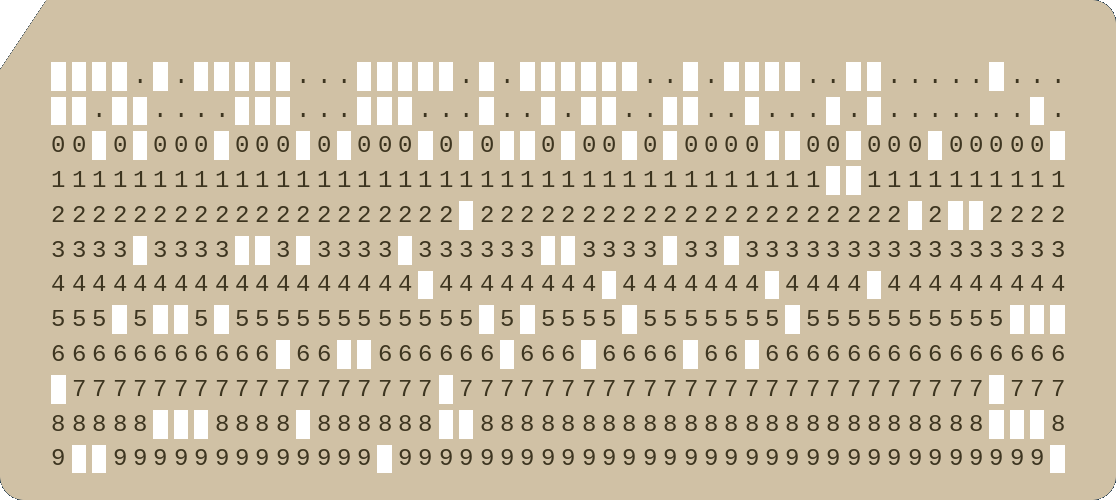Google Code Jam '22 Qualification Round Problem A - Punched Cards
View as PDFA secret team of programmers is plotting to disrupt the programming language landscape and bring punched cards back by introducing a new language called Punched Card Python that lets people code in Python using punched cards! Like good disrupters, they are going to launch a viral campaign to promote their new language before even having the design for a prototype. For the campaign, they want to draw punched cards of different sizes in ASCII art.

The ASCII art of a punched card they want to draw is similar to an matrix without the top-left cell. That means, it has
cells in total. Each cell is drawn in ASCII art as a period (
.) surrounded by dashes (-) above and below, pipes (|) to the left and right, and plus signs (+) for each corner. Adjacent cells share the common characters in the border. Periods (.) are used to align the cells in the top row.
For example, the following is a punched card with rows and
columns:
..+-+-+-+
..|.|.|.|
+-+-+-+-+
|.|.|.|.|
+-+-+-+-+
|.|.|.|.|
+-+-+-+-+There are more examples with other sizes in the samples below. Given the integers and
describing the size of a punched card, print the ASCII art drawing of it as described above.
Input Specification
The first line of the input gives the number of test cases, .
lines follow, each describing a different test case with two integers
and
: the number of rows and columns of the punched card that must be drawn.
Output Specification
For each test case, output one line containing Case #x:, where is the test case number (starting from
). Then, output
additional lines with the ASCII art drawing of a punched card with
rows and
columns.
Limits
.
.
.
Sample Input
3
3 4
2 2
2 3Sample Output
Case #1:
..+-+-+-+
..|.|.|.|
+-+-+-+-+
|.|.|.|.|
+-+-+-+-+
|.|.|.|.|
+-+-+-+-+
Case #2:
..+-+
..|.|
+-+-+
|.|.|
+-+-+
Case #3:
..+-+-+
..|.|.|
+-+-+-+
|.|.|.|
+-+-+-+Explanation for Sample
Sample Case #1 is the one described in the problem statement. Sample Cases #2 and #3 are additional examples. Notice that the output for each case contains exactly periods.
Comments